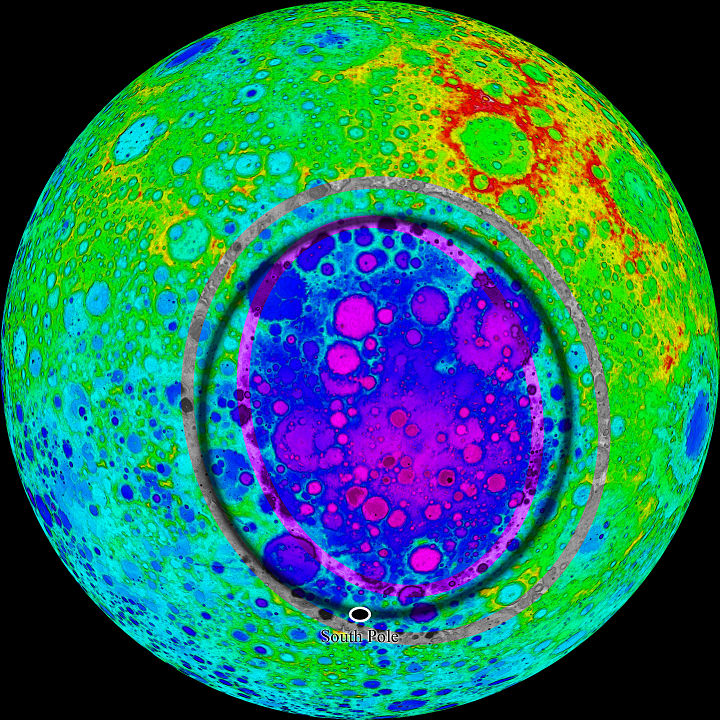Skip to main content Aitken Basin

Overview
- Largest, oldest, and most deepest impact crater on the far side of the Moon.
- Indeed, one of the largest craters in the Solar System
- Aitken Crater is on the north end and the South Pole is on the other end
- Outer rim of the basin can be seen from earth on the Moon’s southern limb as the “Leibniz Mountains”
Cartographic Details
- 53 degrees South 169 degrees West
- Roughly 2500 km in diameter
- Depth ranges between 6.2 and 8.2km
Geologic Details
- Composition of the basin appears to be diffferent from typical highland regions
- Floor of basin has slightly elevated quantities of iron, titantium, and thorium
- Much richer in clinopyroxene and orthopyroxene
Origin
- The meteor impact was likely not a mostly vertical hit as there does not appear to be much deep mantle debris that was excavated by the hit
- Observations suggest about 10km of crustal materials beneath the basin floor
- Meteor might have been a low velocity projectile, possible 200km in diameter) that hit at a low angle and did not dig very deeply into the Moon
- Potential evidence for this may be seen in the high elevations NE of the rim that might represent eject from an oblique hit
Chang’e 4 Mission
Chang’e 4 - Wikipedia
- Chinese lunar space craft and lander that landed in the Aiken Basin in January 2019
- Identified a large mass of material deep within the crater
